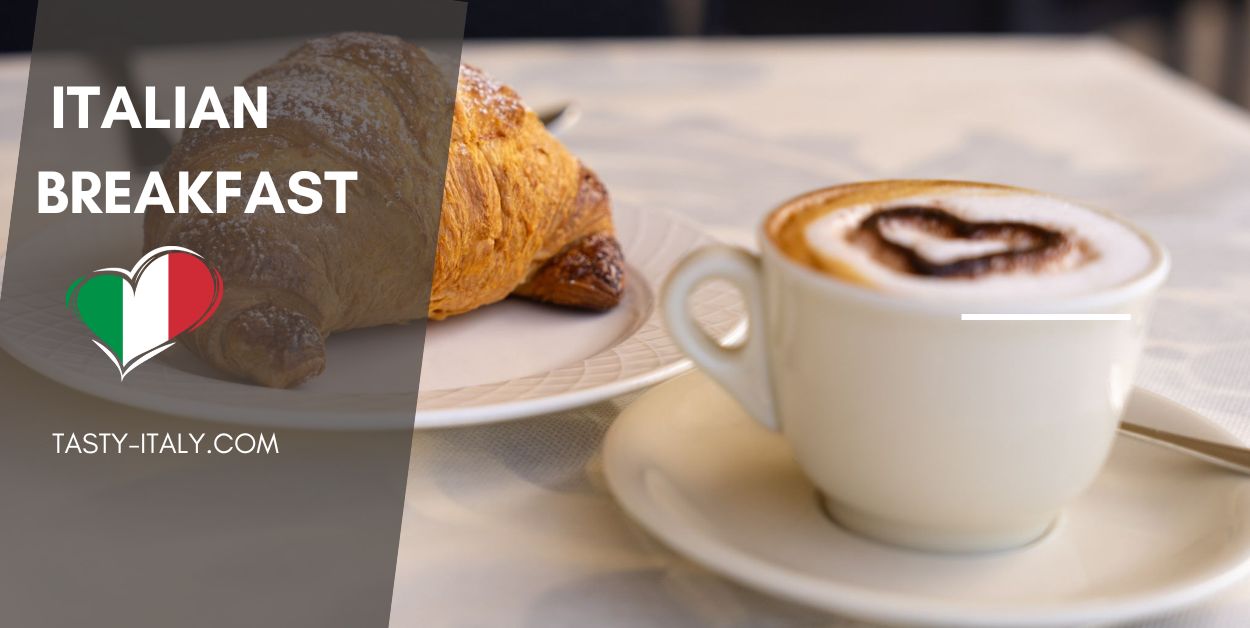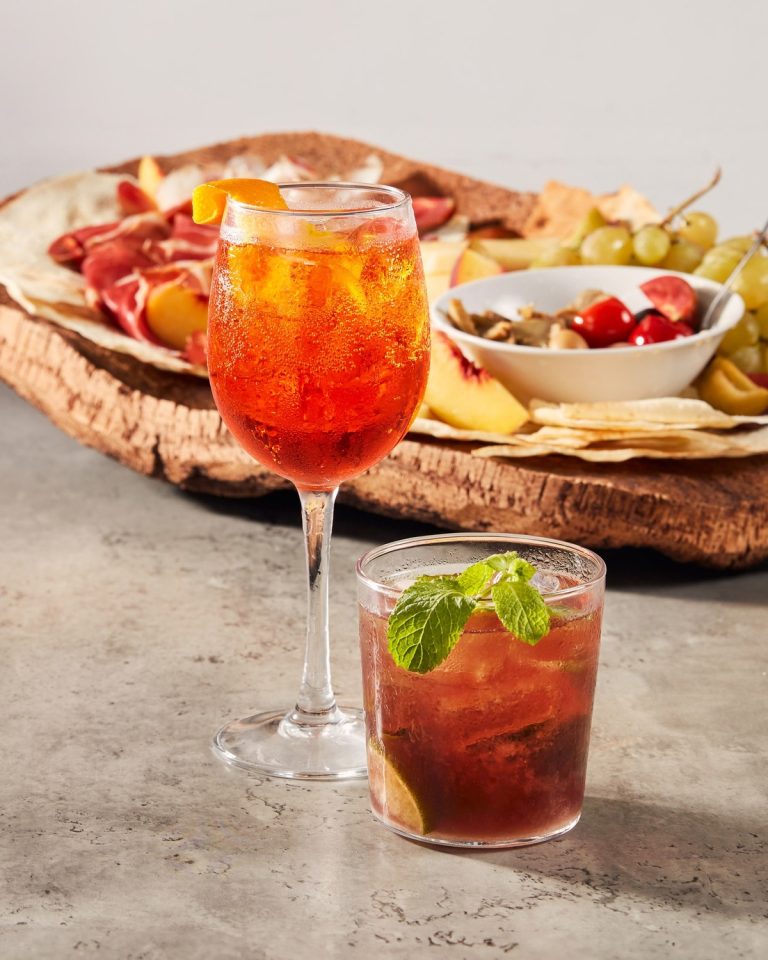Starting the Day Sweet: Typical Italian Breakfasts
As a little girl, I remember my mother wouldn’t let me eat cookies or cake for breakfast. I had to eat something healthy like oatmeal or eggs and toast. Then I moved to Italy and learned that not everyone’s mother told them they couldn’t have cookies for breakfast. In fact, in some cultures, cookies are the norm!
Italian is one of those cultures that encourages children to eat cookies for breakfast. In general, Italian breakfasts are simple, short, and sweet. A typical breakfast is made up of coffee, a flour-based treat, and fruit or a fruit juice. Nothing heavy. Not exactly filling. But this standard breakfast is perfect for helping you wake up with a smile on your face. It gives you just enough of a boost to get your day started without weighing you down from the get-go. The process of eating breakfast only takes a few minutes. Even a special weekend breakfast amongst family will likely last less than 20 minutes.
Even though a typical Italian breakfast is kept simple and small, almost always consisting of a few of the same foods, breakfasts are extremely varied. Let’s take a look at the 12 most common foods and drinks consumed by Italians at breakfast and how they can be altered to create a diverse and delicious morning meal.
1. Coffee

Italians love coffee, and they are very good at making it. This is one of the reasons Italian coffee is so prevalent in coffee shops across the globe. The Italian word caffè technically translates to “coffee” in general, but it typically refers to espresso. Italians don’t typically drink giant mugs or travel tumblers filled with 8oz of caffeine. Instead, coffee is poured into smaller mugs, and rarely made to-go.
A caffè normale, also referred to simply as caffè, is a tiny mug of a single shot of espresso. A caffè doppio, then, is the same tiny mug filled with two shots of espresso. Another popular quick drink is a caffè lungo, which is a single shot of espresso but made with double the amount of water. These beverages are TINY and extremely concentrated. They can be downed in one or two sips, and usually enjoyed standing up if purchased at a bar (coffee shop). Because they are essentially one gulp of concentrated caffeine, many Italians add a spoonful of sugar to dilute the bitterness.
Dairy is viewed as a very heavy food, and Italians typically avoid large amounts of it towards the end of the day. Breakfast is seen as the best time to enjoy milk. It gives you an extra boost of energy, and your morning routine helps your body digest the heavy foods more easily. For this reason, Italians often enjoy milky coffees in the morning, but only in the morning. A caffè macchiato is a single shot of coffee “stained” by a spot of milk. This milk might be a few drops of milk poured straight into the cup, or it might be frothed and foamed prior to pouring over the coffee. For a milkier taste, Italians also enjoy caffè latte, which is essentially a caffè macchiato with a much more generous pour of milk. It may or may not be topped off with a thin layer of milk foam. The most internationally renowned and beloved coffee beverage, however, is the one with the most dairy, and therefore NOT to be drank after a meal (which would be way too heavy for the body to digest properly). The cappuccino is equal parts coffee, steamed milk, and milk foam, and is 100% guaranteed to start your morning on a positive note.
2. Milk
Milk is almost essential in an Italian breakfast. It can be added to coffee, added to a bowl of cereal, or drank as-is. Some Italians – especially teenagers – drink latte macchiato, which is milk “stained” with a splash of coffee. It is similar to the aforementioned caffè macchiato, but the ratio of coffee to milk is reversed. As a remedy for illness, Italians may mix in a dash of honey with a glass of milk in the morning.
3. Tea
Tea is a great remedy for any ailment. It is also a great coffee-alternative in the morning. While the majority of Italians require a coffee in the morning, there is a section of the Italian population that prefers a nice, warm mug of tea or an infusion. A black tea helps to wake you up while an herbal infusion is a favorite for soothing headaches, stomachaches, and sore throats.
4. Fruit Juice
Fruit juice is another favorite beverage, often drank in addition to one of the previously mentioned morning beverages. Juice can be made from a wide variety of fruits, but apricot, peach, pear, and orange are the favorites. One popular mixed-fruit juice is called ACE; it is full of vitamins A, C, and E, along with the tasty flavors of orange, carrot, and lemon.
Fresh-squeezed fruit juices, however, have a special name in Italian. Spremuta is the highest quality fruit juice available. Orange spremuta is a special, and healthy, beverage to enjoy with breakfast in Italy.
5. Brioche, Cornetto, or Croissant
According to chefs and bakers, brioche, cornetti, and croissants are all different foods. But to most Italians, they are considered to be the same idea. Most importantly, they are all delicious and perfect for a Sunday morning breakfast. The prevalence of these treats depends on region. Cornetti are enjoyed in central and southern Italy. Brioche and croissant are more common in the northern regions.
Traditionally, “caffè, cornetto, e frutta”, was the standard for an Italian breakfast. Nowadays, quicker- make foods have taken over on weekday breakfasts at home. But for a weekend treat in house, or when enjoying breakfast at the bar, these bready pastries are still a favorite. Cornetti can be eaten vuoto (“plain”), or filled with a fruit jam, pistachio cream, chocolate, or Nutella. If eaten together, cornetti are often dipped in your cappuccino while eating.
6. Yogurt
Yogurt comes in all sorts of varieties and flavors. Greek yogurt, low-fat yogurt, drinkable yogurt pouches, whipped yogurts… All delicious! Plain, hazelnut, strawberry, wild berry, pistachio, and coffee are some of the most popular flavors. Italians love to enjoy yogurt straight out of the container, mixed with fresh or dried fruits, or even drizzled with honey. Some industrial yogurt brands sell two-part containers with one half yogurt and one half a cereal-like mix-in.
7. Cereal and Muesli
Cereal and muesli are always popular quick breakfasts. Italian cereal choices tend to be a bit healthier, usually based of fibrous flakes with dried fruits and nuts. There are still sugary and chocolate cereals available that are enjoyed by small children. Muesli, which is very similar to granola, is also very common. Typically Italian muesli is made with chocolate, dried fruits, and/or hazelnuts. And Italian bowl
of breakfast cereal or muesli usually also includes, milk, yogurt, or even coffee! Yes, Italians like a bowl of cereal-and-coffee just as much as a bowl of cereal-and-milk.
8. Cookies
The biggest culture shock for me was discovering cookies in the breakfast cereal aisle in the supermarket. And that’s because Italians view cookies as a breakfast food and not a snack! Biscotti (“cookies”) are not super soft and sweet, even though they are still often sugary and chocolatey. They are typically very crunchy, making them perfect for dipping in your morning milk or coffee. Italian breakfast cookies are sometimes called frollini.
Fun fact: Italians eat biscotti for breakfast, but never for a snack. Inversely, they eat pancakes as a snack, but never for breakfast. This culture reversal may be extremely shocking to Americans.
9. Fette Biscottate
To the untrained eye, a box of fette biscottate may look like tiny toast packets. Believe me, they are not. They are dry and crunchy to the bite, but also extremely sweet. Directly translated into English, these are “twice-baked slices” of bread. They are delicious when topped with a spread of honey, jam, or Nutella.
10. Merendine
Translated into English, this food idea doesn’t sound like it belongs in this list. Nevertheless, Italians, especially those under the age of 10, love a little “snackie” for breakfast. These snacks are sweet little pre-packaged treats consisting of super soft bread and a little something extra for novelty. Kinder, the company, makes a wide assortment of these pre-packaged cakey treats that serve as perfect mid-day snacks or as a quick breakfast. To add to the sweetness, many of these types of snacks are made with cream, pistachio flavoring, chocolate, and/or hazelnut spreads.
11. Cake
Italian mammas love to treat their families to a dessert after dinner, and the leftovers never go to waste. It is completely normal and socially acceptable to cut yourself a slice of any leftover cake or crostata (a pie-like dessert) for breakfast. Extra torta alle mele (apple cake) or crostata con la confetura di albicocche (a sort of apricot tart) are an efficient way to eat up leftovers and get a morning boost of energy all in one.
12. Fruit
For the more health-conscious and sportier Italians, fresh seasonal fruits can be a side dish to accompany breakfast, or be the entire breakfast. Whatever is freshest and grown closet to the supermarket is perfect to enjoy in the morning. Peaches, bananas, apples, orange, grapefruits, and apricots are popular choices when they are in season.
This may not sound like a lot of food. And you may be wondering how Italians can make it through their day fully-functional on such a small breakfast when lunch isn’t until 1 in the afternoon. But Italians don’t. A routine that started in grade school has continued into most Italian adults’ lives: the mid-morning
snack. At around 10:30 in the morning, mid-way between breakfast and lunch, most Italians will allow themselves a break for food. This snack may be more of the same things from breakfast, or it may be something more filling and savory like a small panino (sandwich). After a simple and sweet start to the day, and a little mid-morning snack, Italians are prepared to take on the day, enjoying la dolce vita.







